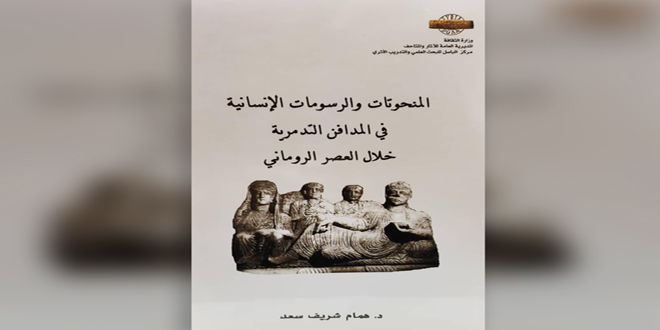The review of the civilizational achievement that Palmyra bequeathed to all of humanity makes us pause at the cemeteries of Palmyra, which were one of the most important reflections of the city’s economic, urban and social development. It was truly a wonderful art as described by the martyr Khaled Al-Asaad.
Through a book with an encyclopedic character embellished with details and information, the archaeological researcher Dr. Humam Sharif Saad provides an explanation about these cemeteries and their close relations with their surrounding environment and the raw materials they contain that help their emergence. He also cast light on how these cemeteries were affected by other neighboring arts and how they preserve their original general shape despite the developments that occurred to them.

The book, entitled (Human sculptures and drawings in Palmyra cemeteries during the Roman era) elucidates that these tombs were divided by scholars and researchers into groups based on the symbols and inscriptions carried by their gravestones. They also include individual gravestones, family cemeteries, and monumental witnesses, which in turn were divided into smaller and more detailed groups.
The author of the book stops at the busts that were placed at the tomb chambers, with which Palmyra locals are distinguished, as they came cut at the waist. These busts are considered strange to eastern art, as they are inspired by the Greek sculptures (Zeugma) and Roman art alike.
Saad devotes extensive chapters to talk about evoking the feast and the family in the cemeteries of Palmyra through panels of intaglio sculpture containing a group of people in a private meeting consisting of a main character and around him many individuals carrying food and drink and other tools that refer to the feast.
In his book, Saad also reviews the frescoes and their importance within the cemeteries, noting that the remaining examples are limited to three tombs that contain important human depictions that follow the ancient eastern traditions by surrounding the painting elements with dark lines to identify and highlight each of them.
It is noteworthy that the author Saad, has a PhD in classical antiquities. His book was issued by the General Directorate of Antiquities and Museums, Al-Bassel Center for Scientific Research and Archaeological Training.
Inas Abdulkareem

